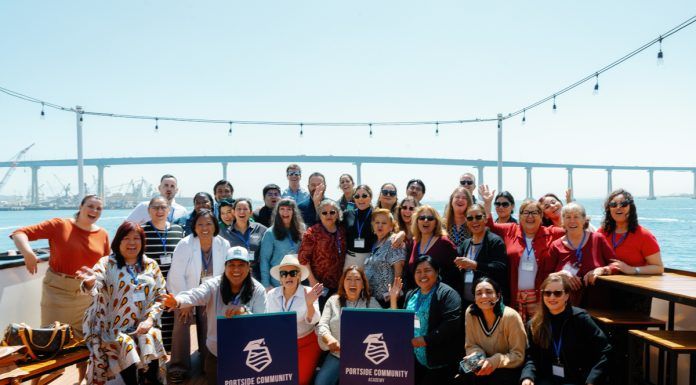In the city of Chula Vista, police use of force is something its police department takes very seriously.
At a recent presentation on the topic at Chula Vista City Hall, Chula Vista Police Lt. Scott Arsenault provided an overview on the agency’s rules regarding use of force.
“An officer’s job is to use the level of force governed by the suspects’ actions,” he said.
The presentation was the project of an intern for Chula Vista City Councilman Rudy Ramirez. The intern wants to become a police officer.
While every situation is different, each use of force is required to be reasonable, a determination made based on what’s necessary to make an arrest, prevent the escape of a suspected offender, overcome resistance or to maintain order.
“The use of unreasonable force is flat out not tolerated in Chula Vista,” Arsenault said. “…It’s about not eroding the public’s trust.”
All uses of force by an officer must be documented and reported to a supervisor and on duty watch commander for review to ensure compliance.
“It’s important to look for patterns of behavior that we need to address immediately,” Arsenault said. “I always tell my officers, ‘I want you to act like you’re being filmed.’”
Arsenault said his officers are taught to handle each situation appropriately, using escalation and deescalation techniques.
“First, we try to gain the suspects’ trust,” Arsenault said. “Then ask them what’s wrong and listen to them. People want to be treated fairly. To me it’s about respect.”
One example of a deescalation technique is something Arsenault calls “verbal judo,” used to diffuse heated situations.
“Deescalting is a really important issue,” he said. “I always try to depersonalize things and maintain a professional demeanor. Even if someone uses profanity towards me I don’t use foul language back.”
All officers receive at least 45 hours of tactical communications training each year, which includes defensive tactics.
There are multiple layers of force that police officers may use, including physical strength and power, used to gain control of a subject or overcome resistance, intermediate force, which includes joint impact weapons like batons, taser guns and pepper spray and other soft and hard weapons and lethal force, likely to cause death or serious bodily injury.
Officers use lethal force only to protect themselves or others from a reasonable threat of death or serious bodily harm or to prevent the escape of violent fleeing felons that officers have probable cause to believe will pose a significant threat to human life.
“You need to be able to justify that there were people in the immediate area that were in significant risk for their life,” Arsenault said.
In 2011, the department received 104,175 calls for service. Out of those calls, 5,636 arrests were made, with 305 of those arrests including police use of force, in which more than 75 percent of the situations were nothing more than a wrestling match, according to Arsenault.
Arsenault said that while very few police departments keep these statistics, Chula Vista has documented every use of force since 2006.
Last year, three lawsuits were filed against the police department claiming police use of force, of which one was unfounded and two officers were exonerated of the charges, according to Chula Police Capt. Gary Wedge.
Arsenault said it’s important that when citizens observe police use of force to observe and be a good witness.
“Give an honest statement of what you saw,” he said. “If one of my officers are heavy-handed I want to know about it. At the end of the day, we expect our officers to use good judgment.”
Twenty-year criminal defense and civil rights attorney Mary Frances Prevost said police use of force is an important issue in communities.
“What we do is we look to see if the police officer has a history of prior similar acts or a history of dishonesty and then of course we have to assess the credibility of our own clients as well,” Prevost said. “There are criminal defendants that try to throw a cop under the bus to try and get out of their own misdeeds.”
However, she said there are police officers who engage in excessive force and when it happens it’s investigated.
“We look at the cops’ background and the credibility of the client,” she said. “We get into their personnel files. We pound the pavement for witnesses.”
Prevost said that more cases of police brutality have become more apparent since cell phones and their cameras became prominent.
“Before that you didn’t hear so much about police brutality cases, because people believed police officers all the time,” Prevost said.
Despite that, Prevost said the majority of officers do not engage in police brutality.
Prevost said that a department taking the responsibility to inform the community on this topic is good outreach.
“I would hope that more police departments would do that,” she said. “It’s great outreach to the community and it’s excellent pr. It’s giving good information to people that need the information.”














